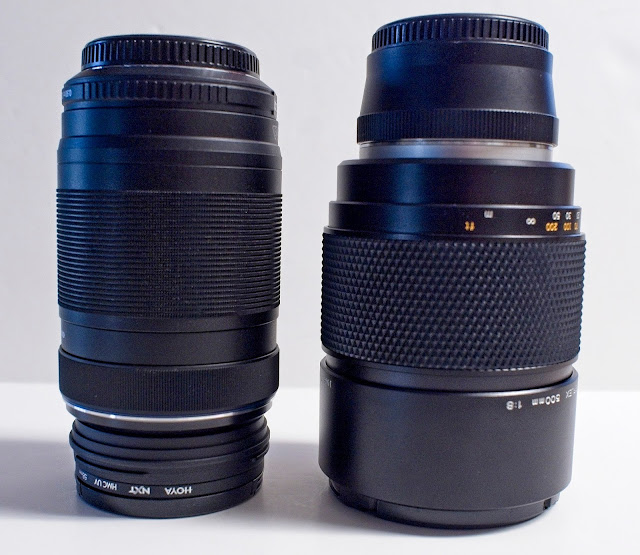The Olympus (now OM Digital Solutions) announcement last year of its new M.Zuiko 100-400mm f/5.0-6.3 IS lens immediately grabbed my attention. As an enthusiast micro four thirds amateur, I have a variety of prime and zoom lenses but none to cover the longest telephone range. My lens lineup includes an Olympus M.Zuiko Digital ED 75-300mm F4.8-6.7 II, but I have found it just a bit short on some occasions.
In additional to the 400mm reach of the new lens, it can focus very close throughout its zoom range, making it valuable for shooting macro/closeup images of flowers and insects at a distance. Another benefit is compatibility with the standard Olympus MFT teleconverters, the 1.4x MC-14 and the 2x MC-20.
However, the large size and its hefty price tag of $1,500 USD have made me rethink the the value this lens would be for me. I used to do a lot of photography on mountain hikes but never pursued birds or wildlife. But as I have gotten older my hikes have become less strenuous walks. I have always been a hand-hold shooter, and the reduced equipment size and weight were my reasons for commiting to micro four thirds. I realize the primary use for this lens would be to get closer images of birds at our backyard bird feeder and screech owls in our tree-mounted owl box.
So, for a cheap option I looked for a vintage Olympus OM lens from the highly acclaimed compact 35mm film OM-System. I got a bargain buy on an Olympus OM-System Zuiko Reflex 500mm f8, a catadioptric lens, commonly known as a mirror lens. These lenses actually use a combination of reflecting (mirror) and refracting (as a standard lens) optical elements.
A comparison of the physical size of the the Micro Four Thirds Olympus M.Zuiko Digital ED 75-300mm ƒ/4.8-6.7 II (left) and the Olympus OM-System Zuiko Reflex 500mm f8 plus the OM-System-to-MFT adapter. Note the adapter is about 1/4 of the length. The mirror lens includes a built-in lens hood, which is retracted in this image.
This lens weighs 980 grams, almost 2.1 pounds. It measures 97 millimeters, or 3.8 inches. The Olympus M.Zuiko Digital ED 75-300mm f4.8-6.7 II shown above weighs 423 grams (14.9 ounces) and is 116.5 millimeters (4.58 inches) in length. The new Olympus M.Zuiko Digital ED 100-400mm f5.0-6.3 IS is 206 millimeters (8.11 inches) long and tips the scales at 1120 grams (2.47 pounds).
The catadioptric construction, also used in large optical telescopes, resulted in much shorter telephoto lenses. The best were made of high quality glass and produced sharp images on 35mm cameras. The Olympus 500mm Reflex ranked equal to the best. Mirror lenses declined in popularity with the introduction of digital photography and the move to smaller mirrorless cameras. Many photographers never liked them because the bokeh balls produced by these reflex lenses were balls with doughnut holes.

My first real test shot after setting up the camera for manual focus and focal length, taken from a parking lot across a main arterial in an Austin suburb, handheld. OM-System Zuiko Reflex 500mm f8, ISO 1600, 1/640, manual focus attached to an Olympus E-M1 Mark III, IBIS set to MS2 (Sensor Shift Only).
On an MFT camera this lens is the equivalent of 1000mm on 35mm, so focusing is a critical challenge, and action shots are off the table. I earned my stripes in photography with the manual-focus Olympus film cameras, so I really enjoy using manual focus for a change of pace. The E-M1 Mark III provides a nice balance for the weight of this lens, easing the focusing task a bit.
With an aperture of f8 only, daylight is a must for shooting hand-held, full sun or partly cloudy preferred. By using DxO PhotoLab 4 with its excellent DeepPRIME noise reduction to process raw images, noise from higher ISO settings is not a problem, however.
I'll keep shooting test shots and having fun with this lens. Whether that experience will keep me from eventually acquiring the Olympus M.Zuiko 100-400mm f/5.0-6.3 IS remains to be seen.





Comments
Post a Comment